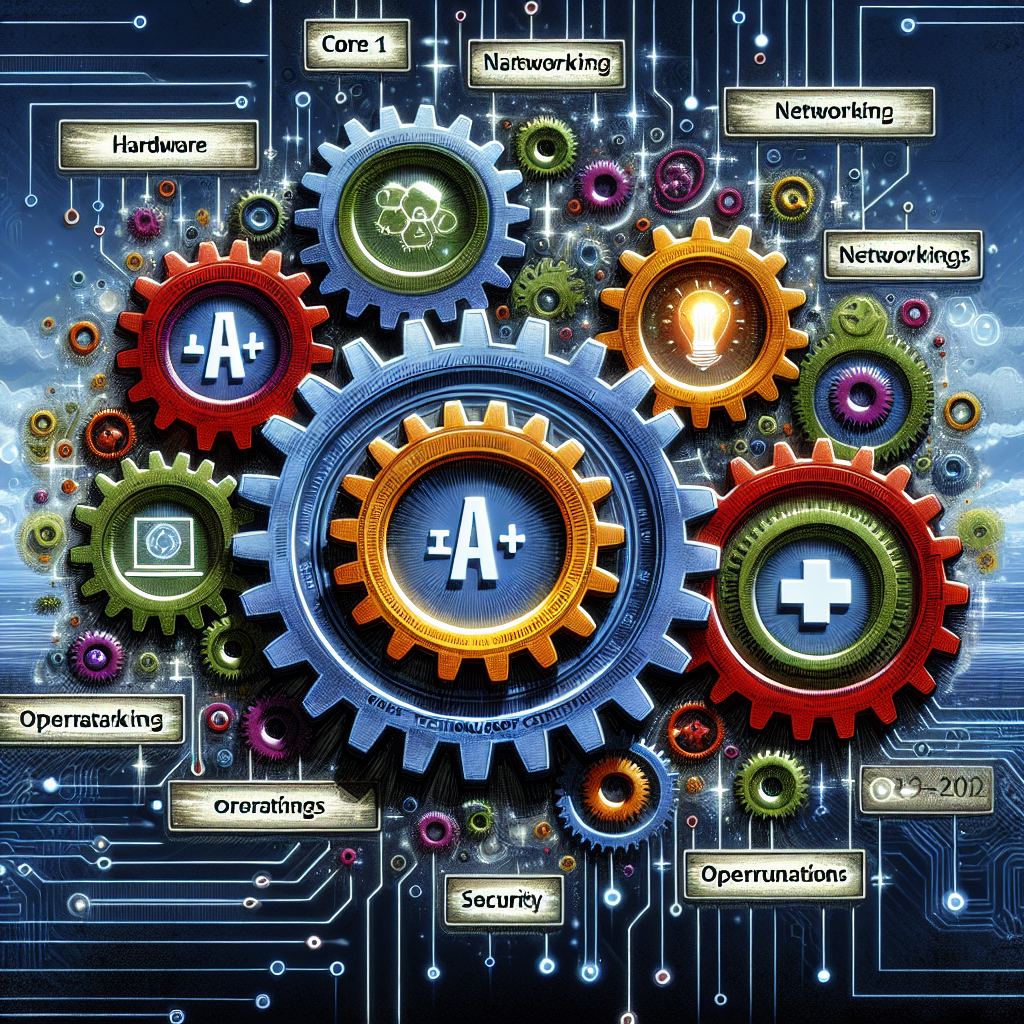The CompTIA A+ certification is a foundational credential in computer technology, widely recognized for establishing a career in IT and sought after by potential employers around the globe. The exams associated with this certification, 220-1001 (Core 1) and 220-1002 (Core 2), cover a broad spectrum of IT knowledge from hardware and networking to operating systems and security.
As with any examination, candidates might encounter a variety of issues either in the preparation process or during the exam itself.
This guide focuses on troubleshooting some of the most common issues faced by candidates preparing for or taking the CompTIA A+ exams.
Step 1: Understanding Exam Objectives
Before diving into specific troubleshooting issues, it is crucial to have a clear understanding of the exam objectives. CompTIA publishes comprehensive outlines of what each exam (220-1001 and 220-1002) covers, and being familiar with these can significantly streamline your study process.
Step 2: Identification of Common Issues
There are several common issues that candidates may encounter when preparing for the CompTIA A+ exams:
- Lack of preparation: Underestimating the breadth and depth of the material covered in the CompTIA A+ exams can be a major hurdle.
- Insufficient practical experience: Theoretical knowledge is important, but practical experience is crucial to understanding and applying troubleshooting techniques effectively.
- Time management: Learning to manage time efficiently on exam day is often overlooked during preparation.
- Anxiety: Exam anxiety can affect performance, regardless of a candidate’s knowledge level.
- Technical issues: Candidates taking online proctored exams may face technical difficulties such as inadequate internet connections or compatibility problems with the testing software.
Step 3: Troubleshooting Preparation Issues
To effectively troubleshoot issues with exam preparation, consider the following strategies:
- Develop a study plan: Create a realistic, detailed study plan that covers all exam objectives. Allocate more time to topics you are less familiar with.
- Utilize diverse study materials: Don’t rely solely on one type of study resource. Use books, videos, practice exams, and simulation tools to enhance your learning experience.
- Seek practical experience: Gain hands-on experience through labs, IT internships, or by setting up your own test environment at home to practically apply your knowledge.
- Join study groups: Engaging with others who are also preparing for the exam can provide support, insights, and different perspectives on difficult topics.
- Schedule regular reviews: Regularly review past material to ensure you retain the information over time, which will help reduce pre-exam anxiety.
- Take practice exams: Practice exams are crucial for learning how to manage time and can help identify areas where further study is needed.
Step 4: Addressing Exam Day Issues
During the exam, several issues might arise that could potentially disrupt your performance:
- Read directions carefully: Misunderstanding instructions can lead to costly mistakes. Take the time to read through the directions thoroughly before starting.
- Time management: Be mindful of the clock, but do not rush. Allocate your time wisely, especially for more comprehensive or challenging questions.
- Stay calm: If you start to feel overwhelmed, take a moment to breathe deeply and refocus. Stress management during the exam is as crucial as answering the questions correctly.
- Check equipment: If taking an online proctored exam, ensure your computer and internet connection meet the necessary requirements and perform any required system checks before the exam starts.
Step 5: Handling Technical Difficulties
For those taking the online proctored version of the exam, technical difficulties can be particularly challenging. Here are steps to troubleshoot common technical issues:
- Check system requirements: Before the exam, verify that your computer meets the necessary technical specifications published by CompTIA.
- Test your equipment: Use the testing software provided by the exam administrator to run a system test. This should be done a few days before your exam to allow time for any necessary adjustments.
- Secure a reliable internet connection: Ensure your internet connection is stable and strong. Wired connections are generally more reliable than wireless (WiFi) connections.
- say~
- Prepare for power failures: Consider using an uninterruptible power supply (UPS) to avoid disruptions due to power fluctuations or outages.
- Contact support immediately: If you encounter any issues during the exam, contact the exam administrator’s support team immediately to help resolve the issue.
By understanding and preparing for common issues that may arise before and during the CompTIA A+ exams, candidates can improve their chances of success. Through thorough preparation, practical experience, and effective problem-solving, achieving CompTIA A+ certification can be a smooth and rewarding journey. Remember, the key to overcoming exam challenges is preparation, practice, and persistence.




